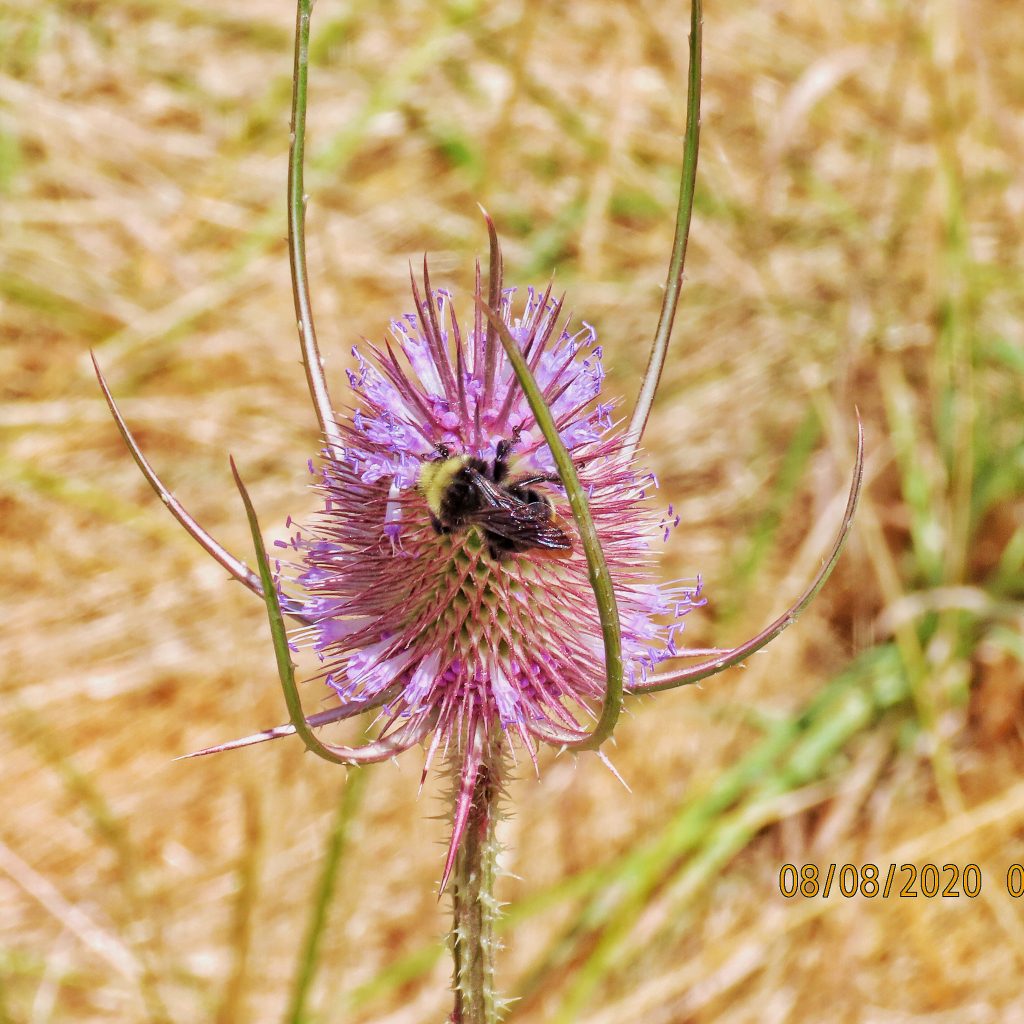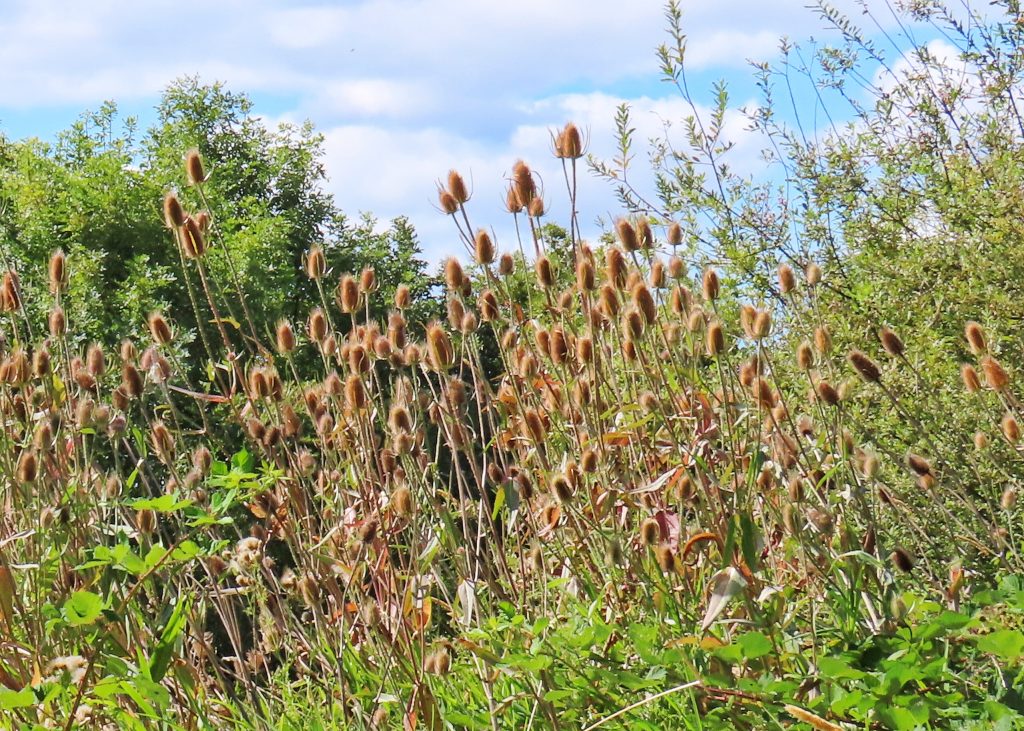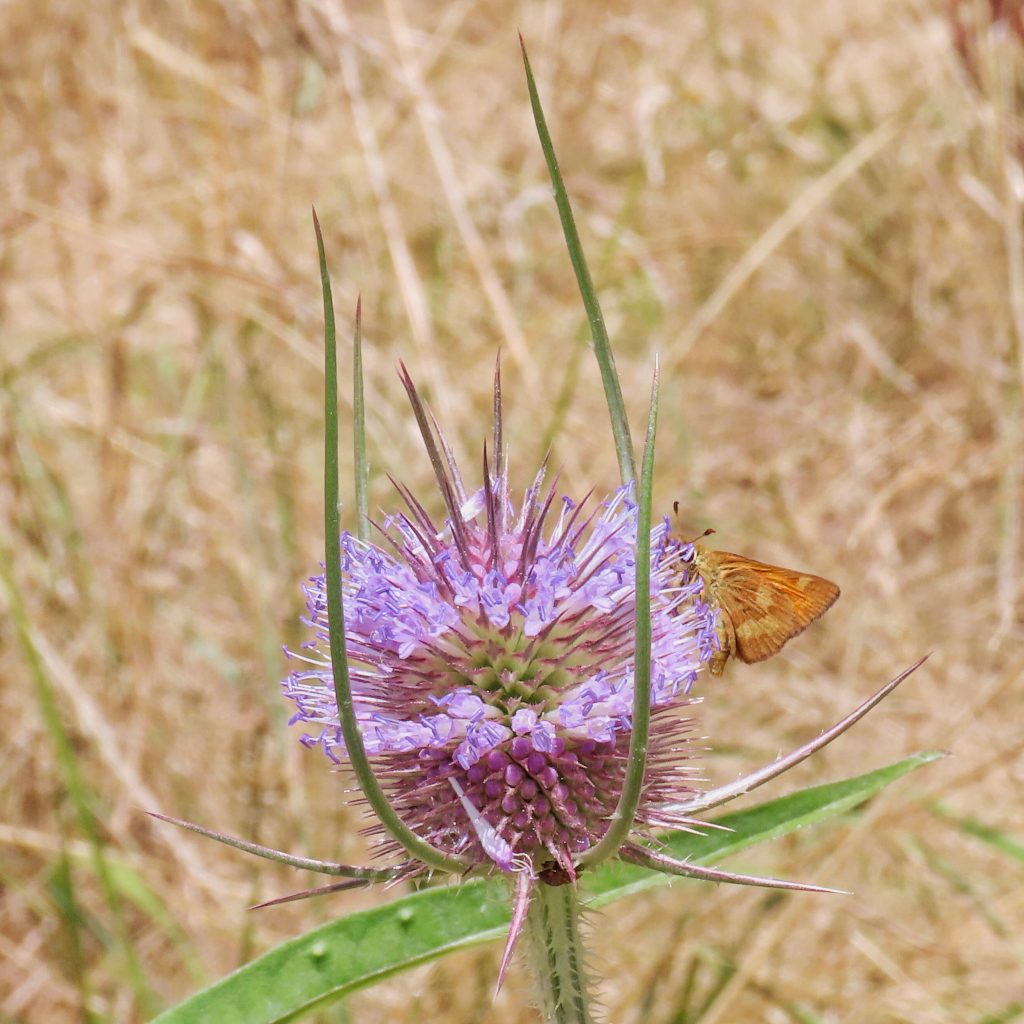
There is some disagreement about the taxonomy of this plant. Hitchcock (2018) considers our teasel to be D. sylvestris, the wild ancestor of D. fullonum, and a separate species. But every other resource I can find treats them as synonymous. It is definite though that Fuller’s Teasel was cultivated, and the dried seedheads were used to card wool and raise the knap on wool fabric, a process known as fullering. It is also known as teasing the wool, and hence the name teasel.
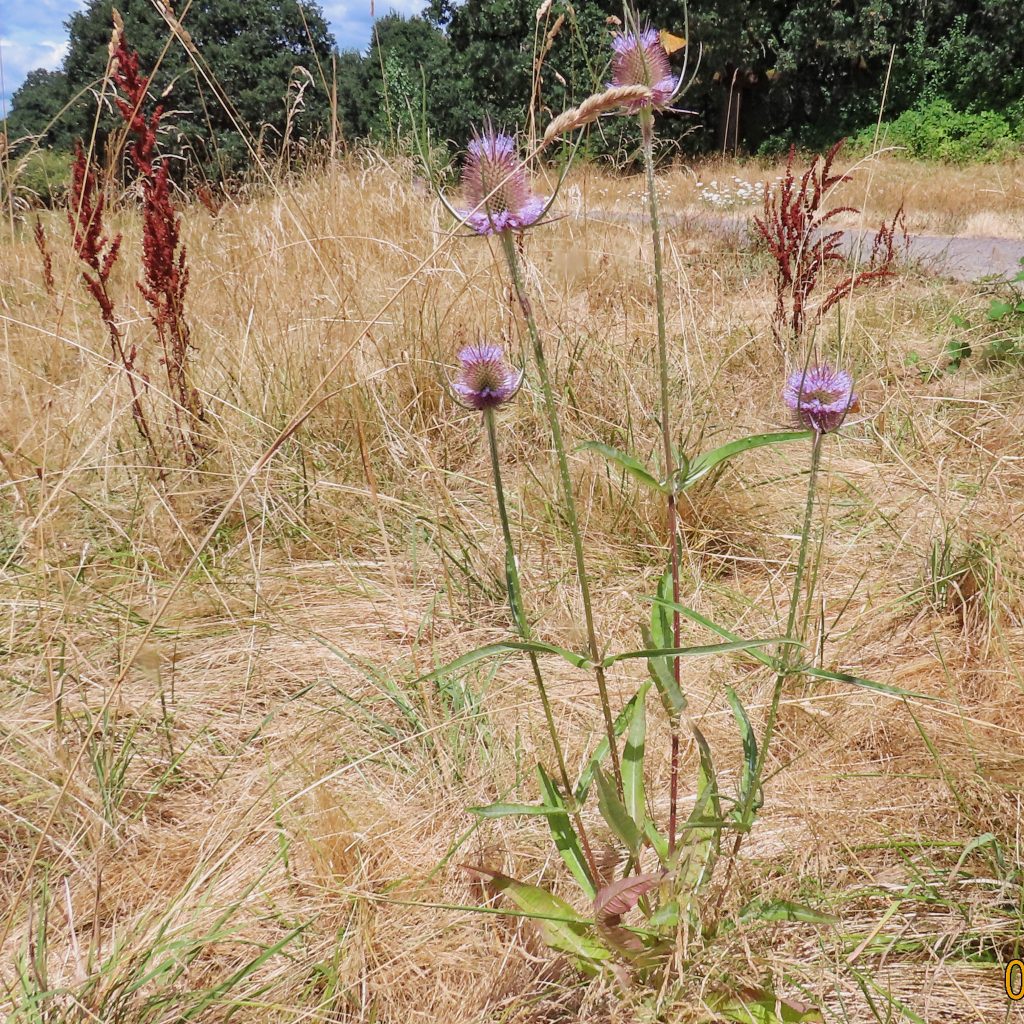
Teasel blooms in stages, with blue/lilac/pink florets appearing first in a band in the middle of the head, then blooming in ever widening parallel bands. They are a distinctive plant, growing up to 6’ tall, with prickly stems, and large, slender, curved, prickly bracts surrounding the base of the flower head, which is 1.5-4” long. The leaves are long and narrow, often shallowly toothed, and clasp the stem in pairs. These pockets often collect water, giving rise to the genus name from the Greek dipsa, for thirst.
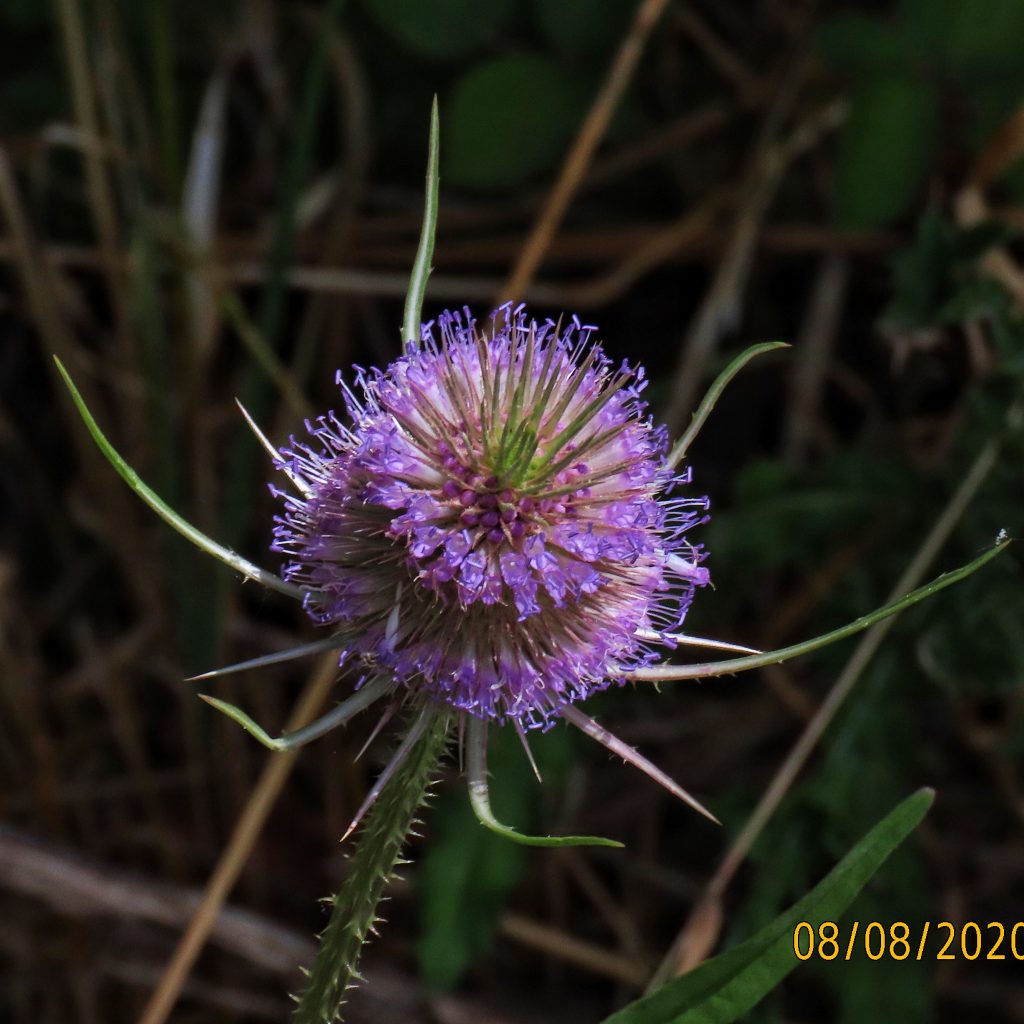
It is possible these little pools protect the plant from sap sucking insects like aphids. It has been shown (Shaw & Shackleton, 2011) that the presence of dead insects in the cups increases the seedset, raising the possibility that the plants are carnivorous.
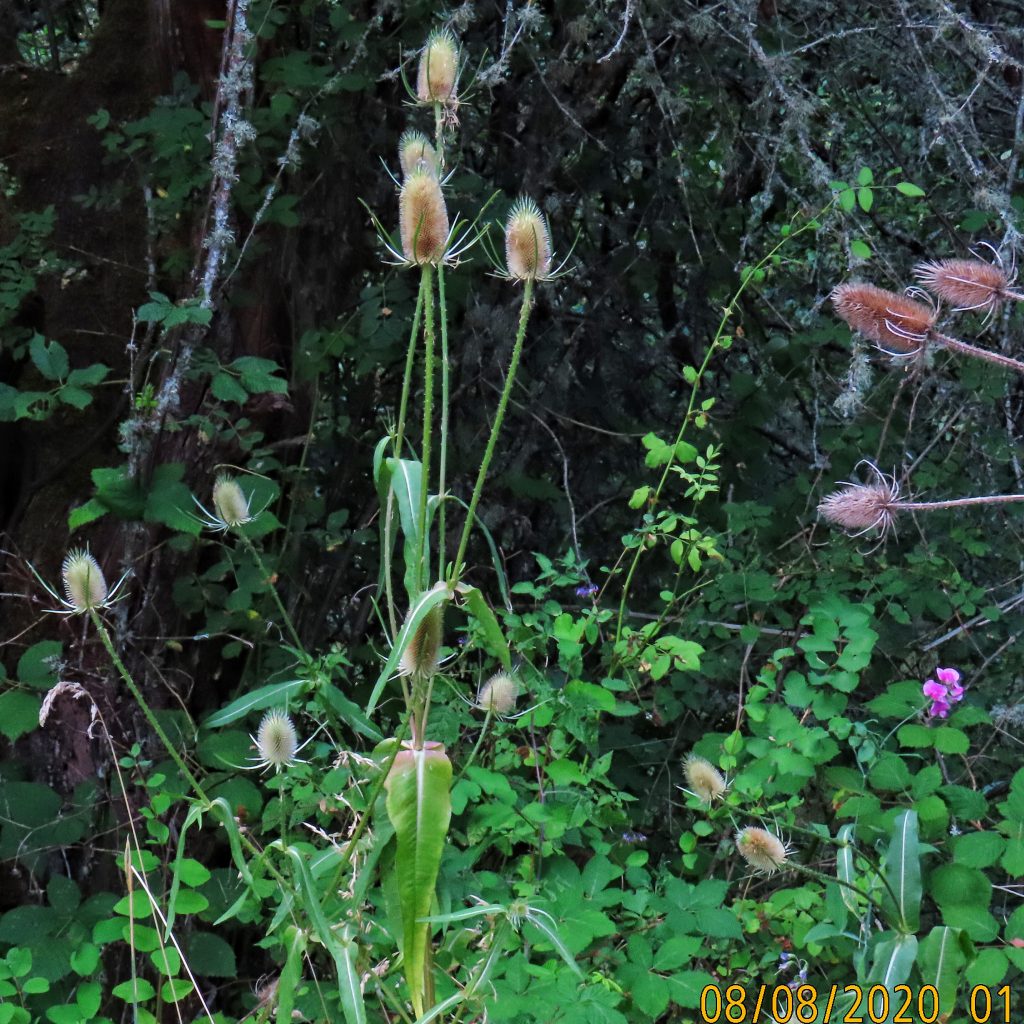
Although it is considered a noxious weed, Teasel is an attractive plant, whose dried seed heads are often used in winter bouquets, and whose nectar and seeds are attractive to a variety of insects and birds.
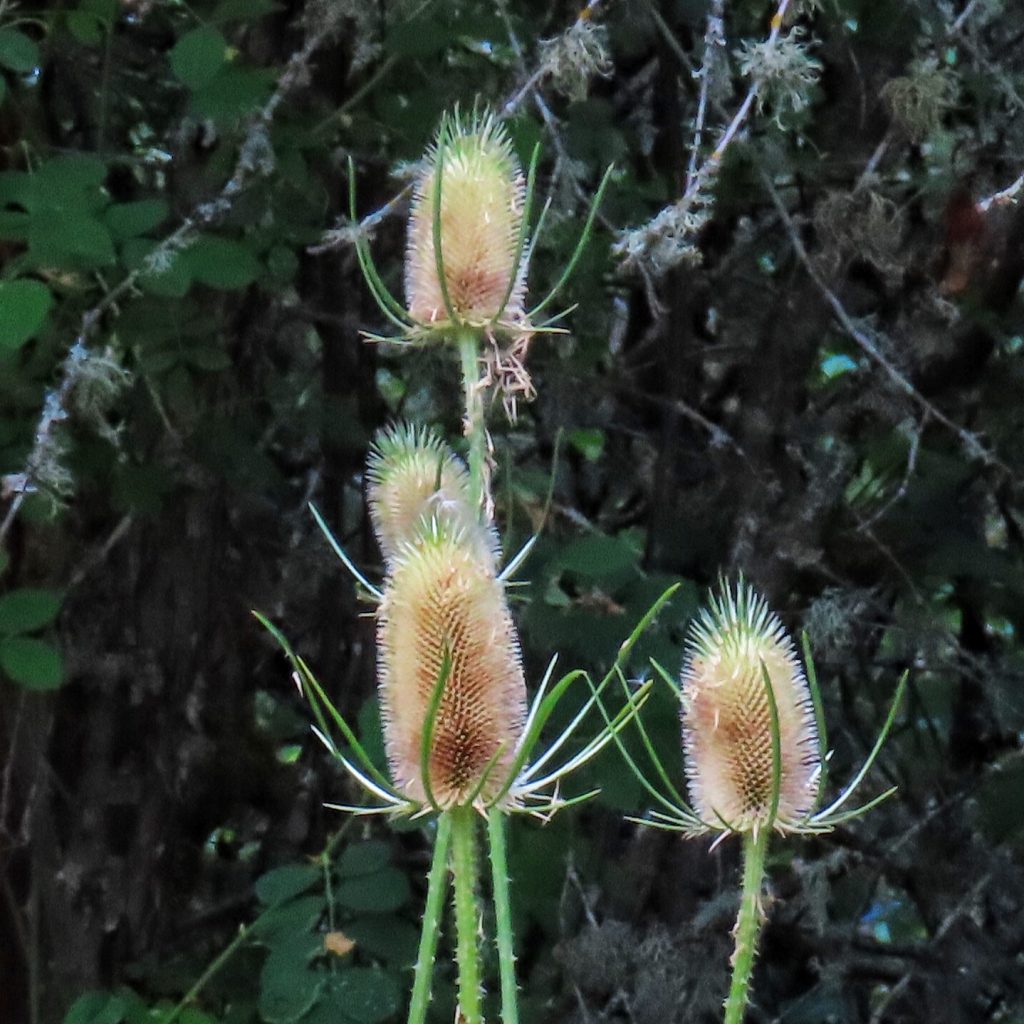
https://en.m.wikipedia.org/wiki/Dipsacus_fullonum
https://www.invasiveplantatlas.org/subject.html?sub=3018
Size- Up to 6’
Habitat- Damp disturbed ground up to mid elevations
Range- Region wide
Blooms- All summer
